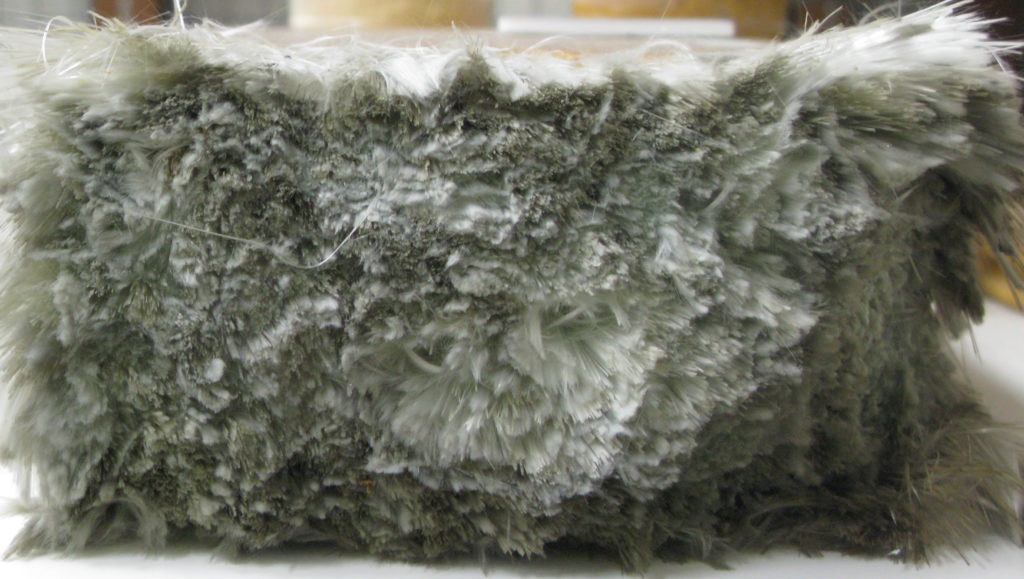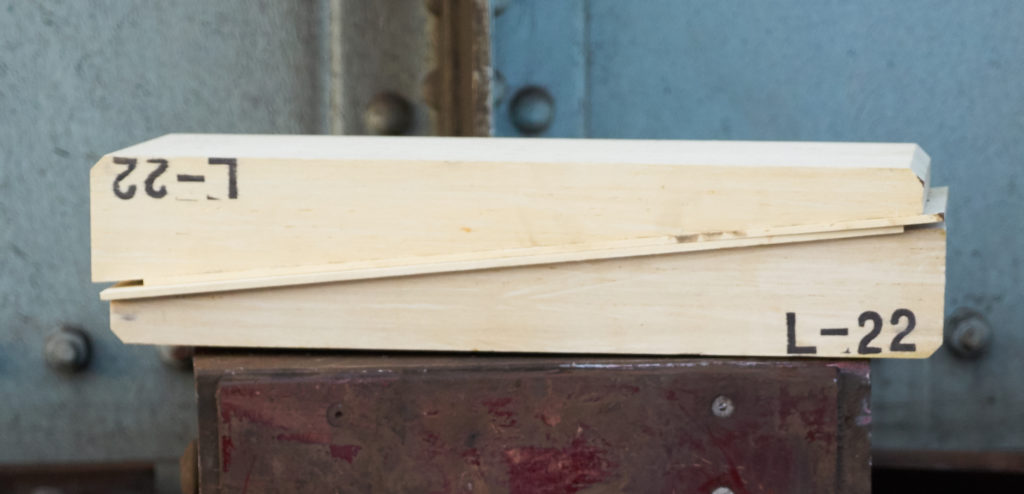In the past, agricultural level crossings on branch lines were usually constructed from wood. Weathering effects and the high demands of agricultural and forestry vehicles and equipment, mean that these wood constructions have relatively short lifespans.
In contrast to wood, (Fibre-reinforced Foamed Urethane (FFU) synthetic wood is based on a near-non-porous material. It does not absorb moisture, not does it require chemical treatment which can be harmful to the environment. It is also weather-resistant.
These aspects increase the safety of crossings and offer longer maintenance-free functionality. In addition to the high life expectancy of FFU synthetic wood, it can be fully recycled too.
Many crossings have already been built using synthetic wood in Japan, Austria, and, since 2022, also in Great Britain. In 2022, Network Rail installed its first FFU crossings, meeting the standards of BS EN 1991-2-:2003: Action on Structures – Traffic loads on bridges. Furthermore, the required surface safety for walking and driving on these crossings also had to be approved.
Together with Network Rail, the FFU level crossing pieces were designed so that each of them can be easily handled by two people, meeting Network Rail’s health and safety regulations.
Why FFU?
In the 1970s, the Japanese Railway identified that the life expectancy of the wooden sleepers it was using was noticeably short, primarily because of environment exposure. As a result, the Japanese Railway wanted to manufacture railway sleepers with the same material properties as their wooden counterpart, but which could withstand the region’s climatic conditions. Sekisui, in partnership with the Japanese Railway, developed FFU in 1978.
FFU synthetic railway sleepers are produced by the pultrusion process (Fig. 4), in which the base material of the sleeper is created by drawing the individual material components through a moulding casing. Continuous surface-optimised glass fibres are drawn precisely into the moulding casing, and a special polyurethane composite is added in the moulding channel which moves along with it. This saturates the very dense glass fibres completely and non-porously. A precisely controlled temperature, and a closely-monitored draw speed guarantee a very high and durable material quality.
The finished FFU strand is continuously extracted at the other end of the casing channel and monitored as it is cooled. It is then cut to the required length and checked again for its quality.

Customised production
This technology offers the advantage that sleepers can be manufactured in almost any shape produced just as precisely as wooden sleepers. This applies, for example, to sole plates, which can be produced from a height of as little as a few millimetres up to a length of 16m, width of 70cm, and height of 35cm.
The synthetic wood can be worked with on the track in the same way as natural wood using high quality tools. On request, pre-prepared drillings precise to the millimetre, processing of any kind, doubling, numbering and much more can be carried out in the factory.
Sleepers can be specially produced depending on the project. Cambers in curve areas, milled grooves for support bearings, holes, and much more, are precision pre-manufactured in the factory according to customer requirements. The sleepers are numbered according to the plan, stamped with the production period, and delivered to the construction site for installation.
Built dimensions
On mainline railways in Europe, sleepers with a construction height of 10cm, width of 26cm and length of 2.6 metres are used, especially on bridges with ballast tracks and on regular tracks at points where the ballast thickness under the sleepers can be maximised by this. Points sleepers of length up to 9.6 metres have also already been installed in Japan and other sleepers around insulated rail joints with a width of up to 60cm in one piece are in use.
For trains, trams, and underground railways, the minimum constructed height is 10cm. Areas where these are used are light and heavy mass-spring systems, direct fixings on bridges, and on points on ballast tracks.
Longitudinal sleepers in a single piece of dimensions of up to 70cm width, 16m length, and 35cm height have been installed on the British and Irish networks on points and bridges.
Recycling/sustainability
The first sleepers, installed in 1980, are still in safe use. As yet, there has been no need to recycle any of these sleepers.
Any waste from the manufacturing process comes in the form of drilling waste dust, chippings from milling, and sanding. One hundred percent of this waste is recycled. The manufacturer also guarantees that it will recycle all synthetic sleepers at the end of their lifetime and create new products out of them. For example, FFU in the form of so-called K-FFU, is made from manufacturing waste and has been used in projects in Austria as sole-plates in bridge abutment wall bearings with a constructive height of a few millimetres (Fig. 6).
Sekisui’s environmental credentials have been recognised by industry bodies, globally. In early March, the company received the Bronze Award at the third ESG Finance Awards in Japan, hosted by the country’s Ministry of the Environment. Sekisui took the award in the Environmentally Sustainable Company category. It was recognised for integrating environmental issues into its business strategy, its high awareness of environmental issues in promoting (ESG) management, and its planning and implementation of a medium-term environmental plan.
In February, Sekisui was given a “Silver Class” sustainability ranking by S&P Global, a global ESG investment investigation and ranking company, and in January it was selected as one of the 2022 Global 100 Most Sustainable Corporations in the World, by Corporate Knights Inc. The Canadian company recognised Sekisui’s efforts towards a sustainable business based on environment, society, and governance. Sekisui has also been selected for 10 consecutive years by the World Index of the Dow Jones Sustainability Indices (DJSI) and has attained the highest rank in the Development Bank of Japan’s Environmentally Rated Loan Program, in recognition of its environmentally conscious initiatives.

Advantages of using FFU
A Life Cycle Cost analysis by the Graz University of Technology shows a possible rate of return of up to 25% when using FFU on Deutsche Bahn’s steel bridges. As mentioned, the technology has been in use in Japan since 1980 and, in 1985, Japan’s Railway Research Technical Institute (RTRI) forecast a life expectancy of 50 years or 1.7 billion tonnes of load. This forecast was reconfirmed in 2010 when sleepers that had been in use for 30 years were examined by RTRI.
In terms of safety, experience and references, this technology has been used on more than 1,800km of installed equivalent track (mainly on bridges and at points). The gauge remains safe due to the strength and the low thermal expansion coefficients. The linear elastic properties of FFU are guaranteed to -65 degrees Celsius.
Safety on the tracks
Experience with a wide variety of synthetic sleepers in the railway sector has shown that the various technologies differ considerably in terms of quality, technical characteristics, and the behaviour of the technical materials used. For this reason, by classifying the materials into types, specialists from operators of rail networks in many countries have presented these differences in a manner that is practical for the ISO Standard 12856-1 for synthetic sleepers.
Sekisui’s FFU sleepers have been successfully used in continuous operation on rail networks for over 42 years. The patented construction method guarantees the highest level of safety and reliability in daily use on railway tracks. In many countries all over the world, FFU synthetic wood has set the standard for the reliable use of synthetic railway sleepers on bridges, in points and in tunnels.
Image credit: Sekisui

